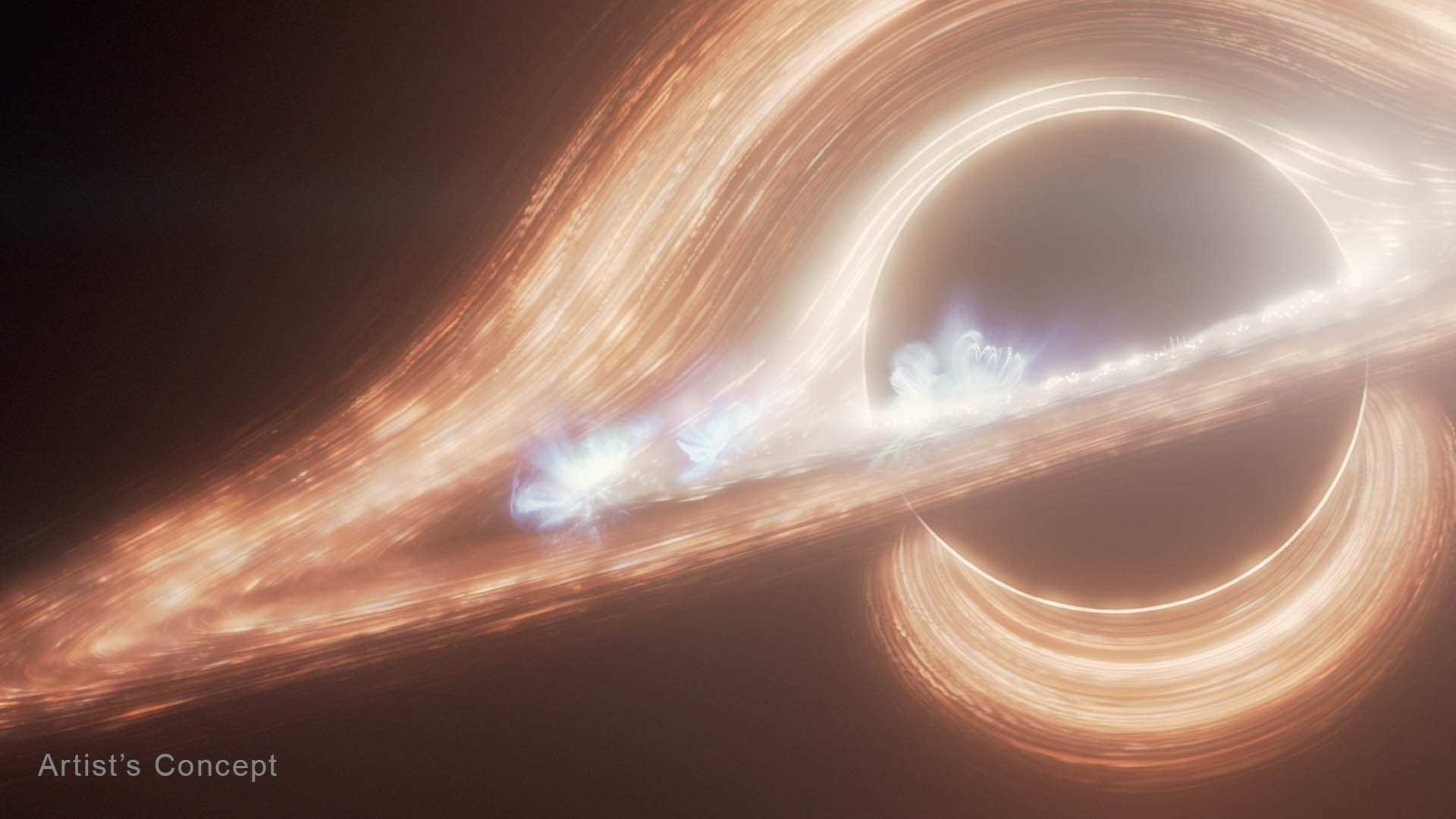Webb Reveals Rapid-Fire Light Show From Milky Way’s Central Black Hole

The supermassive black hole at the center of the Milky Way appears to be having a party, complete with a disco ball-style light show. Using NASA’s James Webb Space Telescope, a team of astrophysicists has gained the longest, most detailed glimpse yet of the “void” that lurks in the middle of our galaxy.
They found that the swirling disk of gas and dust (or accretion disk) orbiting the central supermassive black hole, called Sagittarius A*, is emitting a constant stream of flares with no periods of rest. The level of activity occurs over a wide range of time — from short interludes to long stretches. While some flares are faint flickers, lasting mere seconds, other flares are blindingly bright eruptions, which spew daily. There also are even fainter changes that surge over months.
The new findings could help physicists better understand the fundamental nature of black holes, how they get fed from their surrounding environments, and the dynamics and evolution of our own galaxy.
The study published in the Feb. 18 issue of The Astrophysical Journal Letters.
“In our data, we saw constantly changing, bubbling brightness,” said Farhad Yusef-Zadeh of Northwestern University in Illinois, who led the study. “And then boom! A big burst of brightness suddenly popped up. Then, it calmed down again. We couldn’t find a pattern in this activity. It appears to be random. The activity profile of this black hole was new and exciting every time that we looked at it.”
Random Fireworks
To conduct the study, Yusef-Zadeh and his team used Webb’s NIRCam (Near-Infrared Camera) to observe Sagittarius A* for a total of 48 hours in 8- to 10-hour increments across one year. This enabled them to track how the black hole changed over time.
While the team expected to see flares, Sagittarius A* was more active than they anticipated. The observations revealed ongoing fireworks of various brightnesses and durations. The accretion disk surrounding the black hole generated five to six big flares per day and several small sub-flares or bursts in between.
Two Separate Processes at Play
Although astrophysicists do not yet fully understand the processes at play, Yusef-Zadeh suspects two separate processes are responsible for the short bursts and longer flares. He posits that minor disturbances within the accretion disk likely generate the faint flickers. Specifically, turbulent fluctuations within the disk can compress plasma (a hot, electrically charged gas) to cause a temporary burst of radiation. Yusef-Zadeh likens these events to solar flares.
“It’s similar to how the Sun’s magnetic field gathers together, compresses, and then erupts a solar flare,” he explained. “Of course, the processes are more dramatic because the environment around a black hole is much more energetic and much more extreme. But the Sun’s surface also bubbles with activity.”
Yusef-Zadeh attributes the big, bright flares to occasional magnetic reconnection events — a process where two magnetic fields collide, releasing energy in the form of accelerated particles. Traveling at velocities near the speed of light, these particles emit bright bursts of radiation.
“A magnetic reconnection event is like a spark of static electricity, which, in a sense, also is an ‘electric reconnection,’” Yusef-Zadeh said.
